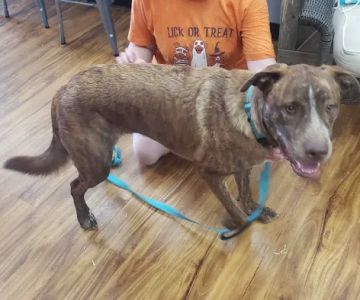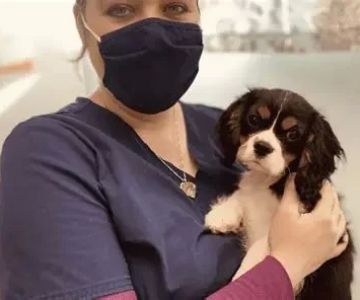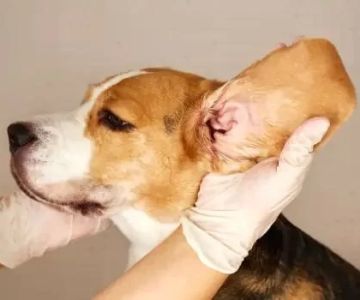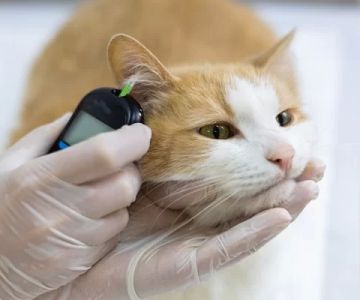How to Respond When Your Pet Is Struggling to Breathe
There’s nothing quite as heart-wrenching as seeing your beloved pet in distress, especially when they’re struggling to breathe. As a pet parent, it's natural to feel helpless in such situations, but understanding how to react quickly and appropriately can make a world of difference. This article aims to guide you through the steps you should take when your pet is having difficulty breathing, and provide practical advice for handling these emergencies while also keeping your pet calm and safe.
Recognizing the Signs of Breathing Difficulty in Pets
When our pets are struggling to breathe, the signs are often clear, but they can vary depending on the severity of the situation. Here are a few common symptoms that may indicate your pet is in respiratory distress:
- Rapid breathing or panting: If your pet is breathing faster than usual, or panting excessively, it could be a sign that they are having difficulty getting enough oxygen.
- Open-mouthed breathing: Cats and dogs typically breathe through their noses, so open-mouthed breathing is often an indication of respiratory distress.
- Coughing or gagging: Persistent coughing or gagging can point to an issue with the airway or lungs.
- Blue-tinged gums or tongue: If your pet’s gums or tongue turn blue, it may indicate a lack of oxygen in their bloodstream, which requires immediate attention.
- Wheezing or noisy breathing: Struggling to inhale or exhale normally can often sound like wheezing or even a high-pitched squeak.
What Causes Breathing Difficulty in Pets?
Understanding the possible causes of breathing issues in pets can help you stay calm and act more effectively in an emergency. There are several potential causes for a pet to experience difficulty breathing, ranging from mild to severe. Let’s take a closer look at some common ones:
1. Respiratory Infections
Just like humans, pets can develop respiratory infections that cause congestion, coughing, and difficulty breathing. Bacterial and viral infections, such as kennel cough in dogs, can significantly affect their respiratory function. In some cases, these infections might progress into pneumonia, making it harder for your pet to breathe.
2. Allergies
Pets, especially cats and dogs, can suffer from allergies triggered by environmental factors like pollen, dust mites, or household chemicals. These allergens can cause inflammation in the airways, leading to labored breathing. If your pet has a history of allergies, it’s important to monitor their exposure to known triggers.
3. Heart Disease
Heart issues can sometimes manifest as breathing difficulties in pets. Conditions like congestive heart failure or heartworm disease may cause fluid to accumulate in the lungs, making it difficult for your pet to breathe normally. Older pets are more likely to experience heart problems, but these can affect pets of all ages.
4. Obstruction of the Airway
Airway blockages due to foreign objects or swelling can obstruct airflow and make it incredibly difficult for your pet to breathe. If your pet is choking, they may exhibit signs like pawing at their mouth or neck and may start to gag or cough violently.
5. Trauma or Injury
Accidents or injuries that impact the chest or neck area can result in breathing difficulties. Broken ribs, punctured lungs, or other traumatic injuries can cause pain and restricted airflow. Immediate veterinary intervention is required in these cases.
What to Do When Your Pet Is Struggling to Breathe
When you notice your pet showing signs of breathing difficulties, it's essential to act swiftly. The first step is to remain calm and assess the situation. Panicking can make it harder for both you and your pet to think clearly. Here’s what you should do:
1. Keep Your Pet Calm
Your pet may become anxious or fearful if they’re having trouble breathing, which can make the situation worse. Speak to your pet in a soothing voice and try to keep them as calm as possible. Avoid exerting any physical pressure on their chest, as this can worsen breathing difficulties.
2. Ensure a Clear Airway
If you suspect that your pet is choking on something, carefully check their mouth and throat for any visible obstructions. If you see a foreign object, do not try to remove it unless you are sure you can do so safely. In cases of severe choking, you may need to perform a pet Heimlich maneuver.
3. Limit Physical Activity
Limit your pet’s movement to prevent them from exerting themselves. Make sure they stay in a calm, quiet area until help arrives. Avoid trying to exercise them, as it may worsen the problem.
4. Seek Veterinary Help Immediately
If your pet’s breathing difficulties persist or worsen, get them to the vet as quickly as possible. In emergencies, call ahead to the veterinary clinic so they can prepare for your arrival. If you can’t get to a clinic right away, ask if they can provide emergency guidance over the phone.
How I Handled My Pet’s Breathing Emergency
Not long ago, my dog, Buddy, began to struggle with his breathing one evening. I noticed he was panting heavily, and his breathing seemed more labored than usual. His gums even started turning a slight blue, which immediately sent me into panic mode. I knew I had to act quickly, so I called my vet’s emergency number, explained the situation, and they told me to bring him in immediately.
On the way there, I kept Buddy calm by talking to him gently and keeping him still. When we arrived, the vet quickly assessed the situation and found that Buddy had developed a severe case of pneumonia due to an undiagnosed respiratory infection. It was a scary moment, but with prompt care, Buddy made a full recovery.
That experience taught me the importance of recognizing the signs of respiratory distress early on and seeking veterinary help right away. Pets, especially dogs and cats, can’t communicate their discomfort in the same way humans do, so we have to be extra vigilant in watching for signs of distress.
Prevention Tips for Respiratory Issues in Pets
While not all respiratory problems can be prevented, there are steps you can take to reduce the chances of your pet developing breathing difficulties. Here are a few tips:
- Maintain a clean environment: Dust, mold, and other allergens can trigger respiratory issues in pets. Regular cleaning of your home and keeping allergens to a minimum can help keep your pet's respiratory system healthy.
- Ensure a healthy diet: Feeding your pet a balanced diet that supports their overall health is essential, including their respiratory health. Obesity can put additional strain on the heart and lungs, so make sure to manage your pet’s weight properly.
- Regular vet check-ups: Routine veterinary visits help catch potential health problems early, including those affecting your pet’s breathing. Stay up to date with vaccinations and heartworm prevention to minimize the risk of infections.
- Avoid smoking around your pet: Secondhand smoke can severely affect your pet’s respiratory health. If you smoke, consider keeping your pet in a smoke-free area to avoid exposure to harmful toxins.
Taking proactive measures can go a long way in preventing serious breathing issues for your pet, but always remember that accidents and illnesses can still happen. The most important thing is to stay calm and act quickly if you ever find yourself in a situation where your pet is struggling to breathe.











